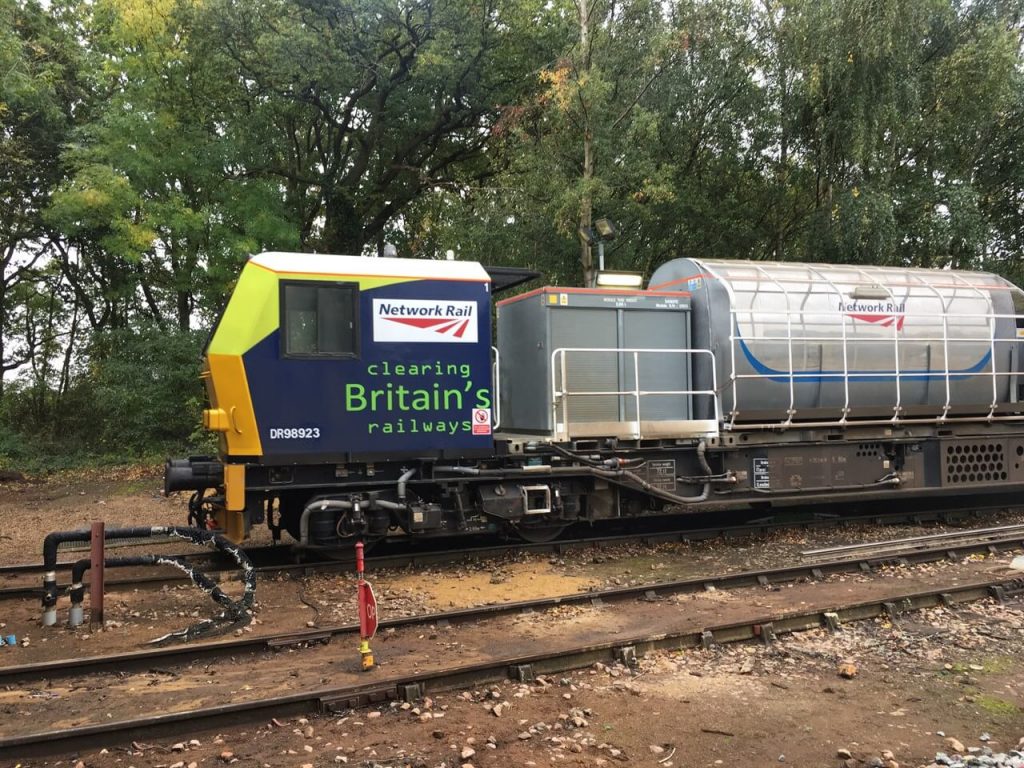Specialist machines help our engineers to keep the railway running whatever the weather.
The effects of weather are a challenge for Britain’s railway, and weather conditions can severely impact the day-to-day running of train services.
Rain can result in flooding and damage infrastructure such as bridges, lineside equipment and the track, for example – or lead to landslips – while rail can buckle and overhead lines sag in summer heat. Autumn leaf fall causes operational problems for the signalling system and reduces trains’ grip, which can change the ability of a train to start from a station, accelerate and climb hills or stop at stations or signals.
When difficult weather conditions mean trains can’t safely run to the normal timetable, such as if flood water rises above tracks or when ice prevents points working, then some train services are cancelled and speed restrictions are put in place.
Our engineers and contractors maintain, repair and improve our rail infrastructure around the clock in all weathers to make it possible for trains to run. To help them tackle the challenges, come rain or shine, and keep the railway resilient, our seasonal track treatment machines and vehicles are ready and waiting.
Winter
De-icing conductor rail
Winter timetables are decided between our route teams and the train operating companies. There are three types of winter de-icing train, which are explained here.
Winter weather is a particular problem for third-rail areas because in these areas there is a conductor rail running along the ground that’s easily covered by snow and ice, which stops power reaching trains.
In these areas, when snow and ice is forecast we plan multipurpose vehicles (MPV) and snow and ice treatment trains (SITT) to help clear snow from the conductor rails and prevent ice from freezing to them again.
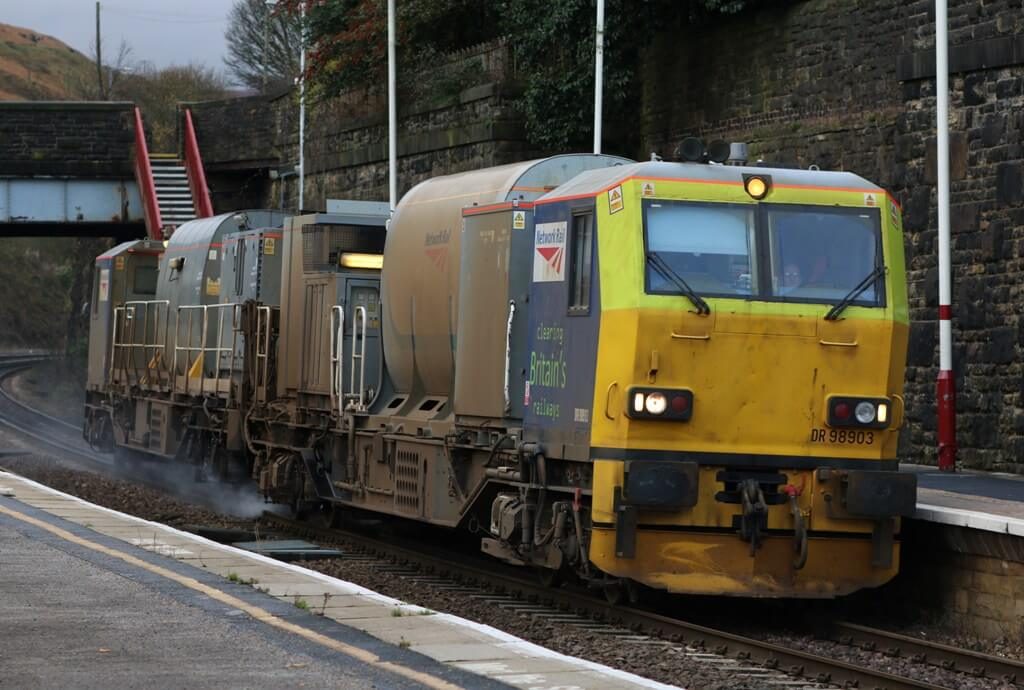
The MPV and SITT both scrape ice off the conductor rail head (the top of the conductor rail) and can spray the rails with hot liquid anti-icer that prevents ice sticking to the conductor rail head.
There are 24 MPV used on the third-rail routes of Kent, Sussex, Wessex and Mersey Rail, while 10 SITT locomotive-hauled trains are deployed in Kent and Sussex.
The third type of winter de-icing train, the winter development vehicle (WDV), is built to blow hot air around the running rails – specifically around points and crossings – to melt snow and ice that is stopping the points from working. The WDV is also equipped with steam lances to melt the more built-up stubborn ice deposits.
Route proving
During autumn and winter, MPV and SITT (see above) can run on their pre-defined paths for route proving – clearing snow and ice from the routes of passenger and freight trains before they run.
Locomotives are deployed for specific conditions on a route and at riskier locations. These are owned by freight operating companies and can be fitted with mini snow ploughs (MSP, also see below) for light snow.
During periods of freezing fog or freezing rain, electric locomotives can knock ice from overhead lines – which carry electricity to trains – before it can cause a critical failure or stop the electric current.
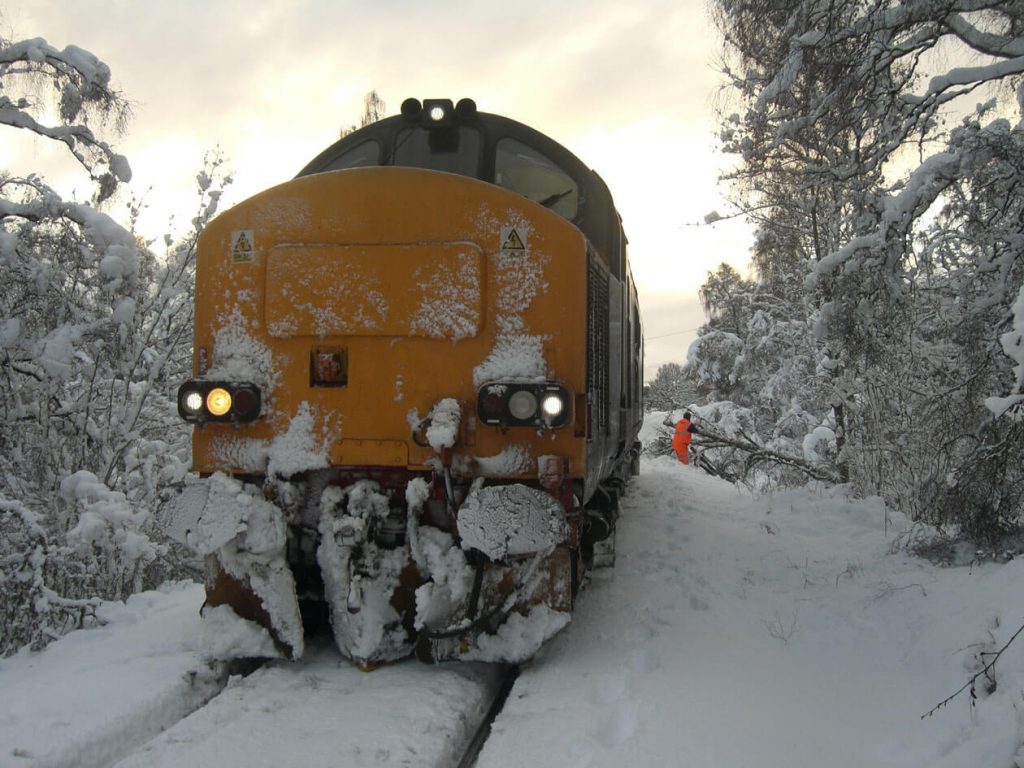
Snow ploughs
We use many types of snow plough – which to choose depends on the location of the railway line, weather conditions and depth of snow.
Mini snow ploughs (MSPs) – owned by freight operating companies – clip on to the front of locos that are operated under contract to us, and as the name suggests, they’re the smallest of the ploughs. Their blade can be adjusted for snow depth but can’t usually cope with more than 18 inches.
The MSP is the most common plough on the tracks, used across Britain, and its main purpose is route proving (see above).
Small snow ploughs can fit to the front of passenger trains to clear up to eight inches of snow. These and our typical winter weather vehicles and procedures (see above) may not be enough to remove heavy snowfall though – that’s a job for our extreme weather fleet (our ploughs below and our snow blowers).
We have three different types of snow plough available:
- SITT (see De-icing conductor rail) plough – This can be added to the SITT (front and rear) in the event that a significant snow fall has closed a third-rail route.
Heavier snow calls for our more robust ploughs to be deployed:
- Beilhack V plough
- Independent snow plough
Neither of these can be used for avalanches though, as rocks, ice and debris could be hidden within the snow, so in this case the snow is cleared by hand.
All snow ploughs are propelled by locomotives owned by FOC, and always need a minimum of two locomotives – this also gives flexibility and resilience.
Snow blowers
Network Rail’s two snow blowers (see image below), based in Scotland, are fitted with propellers that cut through and blow away snow drift. A special hydraulic turntable within the machine makes it possible for the snow blower to turn around on its own if needed.
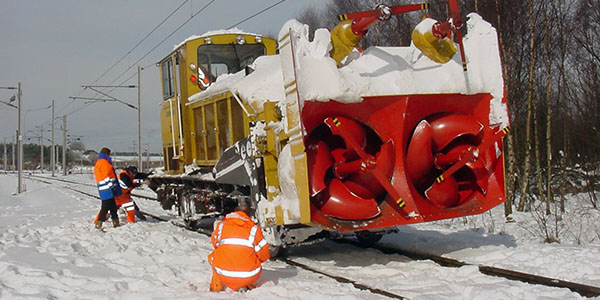
You can read more about how we keep the railway going in winter on our Delays Explained pages.
Keeping trains moving in snow and ice
Spring/summer
Killing weeds
Our eight multipurpose vehicles (MPV) are equipped to spray herbicides to control plant growth on the tracks. This is carried out for a number of reasons including: maintaining safe walking routes for our workers, allowing drivers to see signals, preventing damage to trains caused by vegetation and maintaining the stability of our structures.
Plants on the track could present a hazard by preventing train wheels from gripping the track effectively and by making it harder to spot potential faults.
How we manage vegetation by the railway
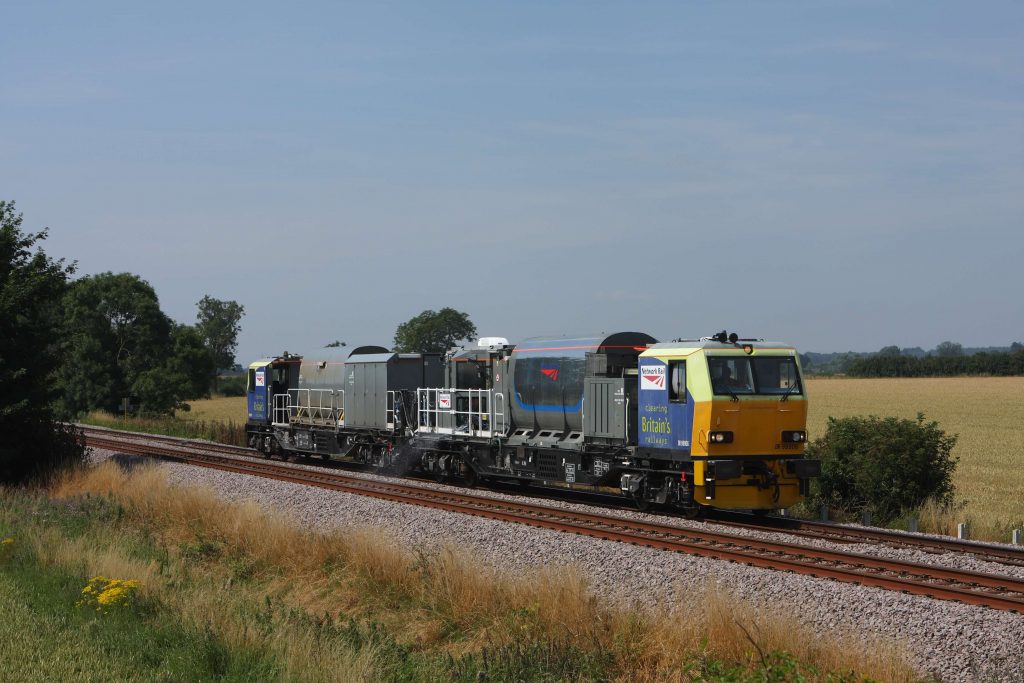
Autumn
Leaves on the line
During autumn leaf fall, leaves on the railway line cause problems. They create operational issues for the signalling system (track circuits) and reduce trains’ grip – this can change the ability of a train to start from a station, accelerate and climb hills, or stop at stations and signals.
We have 32 multipurpose vehicles and 29 locomotive-hauled rail head treatment trains (RHTT) – our dedicated, purpose-built equipment – that deliver our autumn rail head treatment (RHT) programme. Both these types of train are equipped with a high-pressure pump delivering 1,500 Bar and, if required, can apply adhesion modifier to each running rail.
Adhesion modifier is a mixture of suspension gel (so it can be pumped), sand (to help train wheels grip the rail), and steel or iron shot that is pushed through contamination (compressed leaves and debris) on the rail head to help the track circuits work correctly.
If the track circuits fail to identify, or ‘lose’ a train (because the leaf and debris contamination is preventing this) then the signalling system is designed to automatically stop all the trains to prevent an accident.
Find out about our fail-safe signalling system
